Travel destinations Comments: 2 Oct 10, 2017
In recent years Serbia, as well as the entire Balkan region, recorded a significant increase in the number of foreign tourists (approximately 10-15% growth per year). Major tourist destinations include cities and ethno-villages, ski resorts, spas and health resorts, nature parks and reserves, archaeological sites, religious architecture and music festivals.
As this growth trend is expected in the following years, portal BusTicket4.me has decided to present you 10 places you need to visit and if you decide to spend your holiday in Serbia, make it easier for you to choose your next tourist destination.
Studenica Monastery
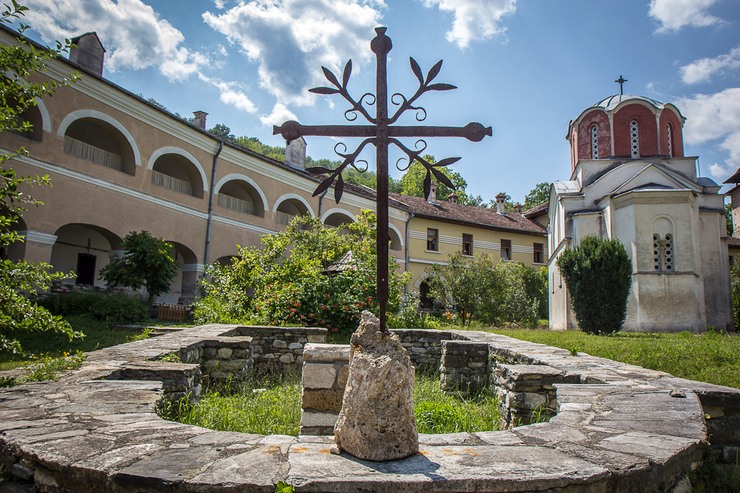
The Studenica Monastery is a 12th-century Serbian Orthodox monastery situated 39 kilometres southwest of Kraljevo in central Serbia. Stefan Nemanja, the founder of the medieval Serb state, founded the monastery in 1190. The monastery's fortified walls encompass two churches: the Church of the Virgin, and the Church of the King, both of which were built using white marble. Studenica was declared Monument of Culture of Exceptional Importance in 1979, and it is protected by Republic of Serbia, and in 1986 UNESCO included Studenica monastery on the list of World Heritage Sites.
Oplenac
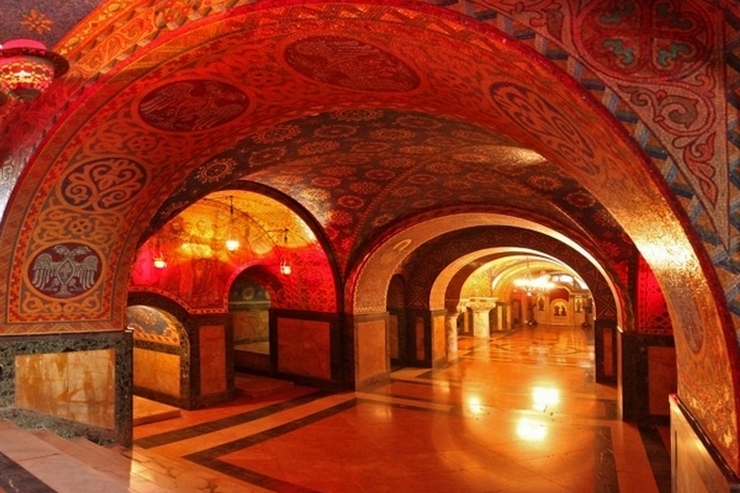
St George's Church, also known as Oplenac, is the mausoleum of the Serbian and Yugoslav royal house of Karađorđević located on top of the Oplenac Hill in the town of Topola. The church of Oplenac was founded by King Peter I of Yugoslavia. Many members of the royal house are buried in the church, in the crypt beneath the church, or in the church yard.
Prskalo waterfall
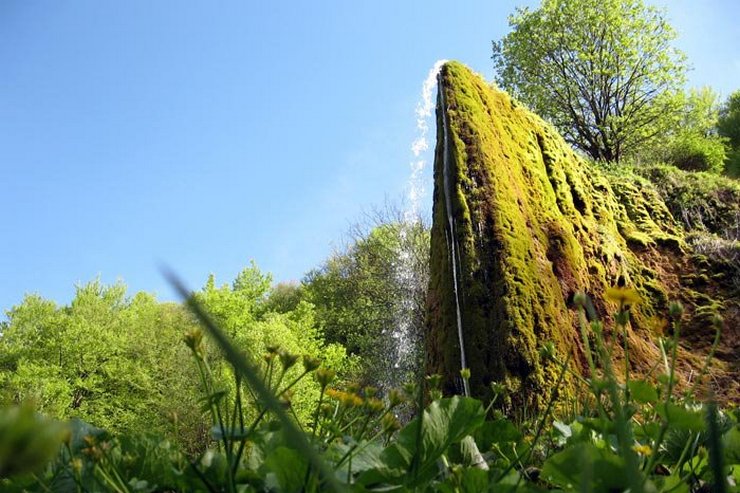
Prskalo waterfall is one of the most beautiful and most interesting waterfalls in Serbia, with its very unusual structure that resembles a tall stone sculpture. The water from the nearby spring flows over the top of the rock, creating a thin but powerful jet. It is located in the Kucaj mountains, 17 km away from the nearest paved road. Due to it’s unusual look and uniqueness, it has become famous worldwide among nature lovers.
Petrovaradin Fortress
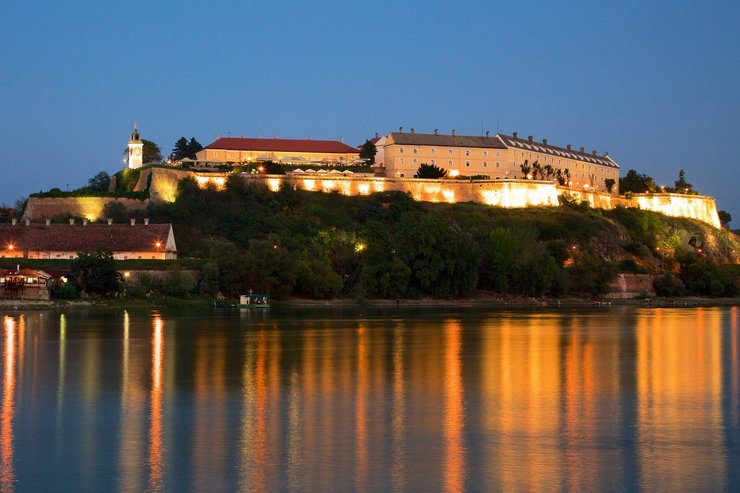
Petrovaradin Fortress, nicknamed "Gibraltar of the Danube", is a fortress in the town of Petrovaradin, itself part of the City of Novi Sad. It is located on the right bank of the Danube river. The cornerstone of the present-day southern part of the fortress was laid on 18 October 1692 by Charles Eugène de Croÿ. Petrovaradin Fortress has many underground tunnels, as well as 16 km of uncollapsed underground countermine system. In 1991 Petrovaradin Fortress was added to Spatial Cultural-Historical Units of Great Importance list, and it is protected by the Republic of Serbia. Since 2001 at the Petrovaradin Fortress annual summer music festival EXIT is held.
Vinca
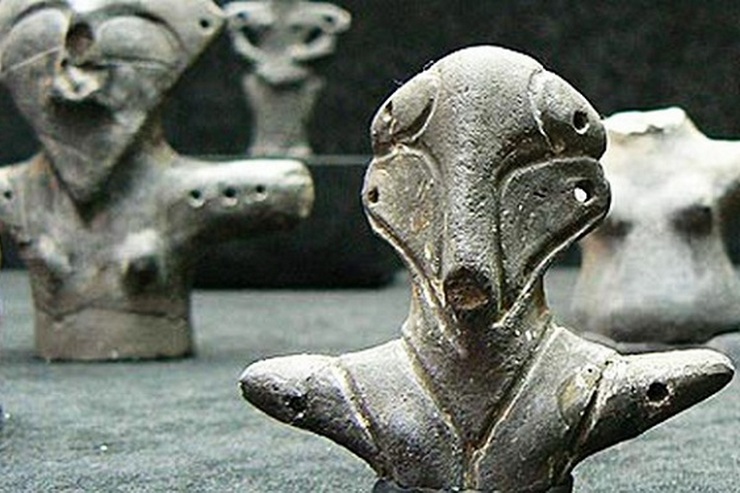
Vinca (Belo Brdo) is an archaeological site in a suburb of Belgrade. The tell of Belo Brdo ("White Hill") is almost entirely made up of the remains of human settlement, and was occupied several times from the Early Neolithic (c. 5700 BCE) through to the Medieval period. The most substantial archaeological deposits are from the Neolithic-Eneolithic Vinca culture, of which Vinca-Belo Brdo is the type site.
Gamzigrad
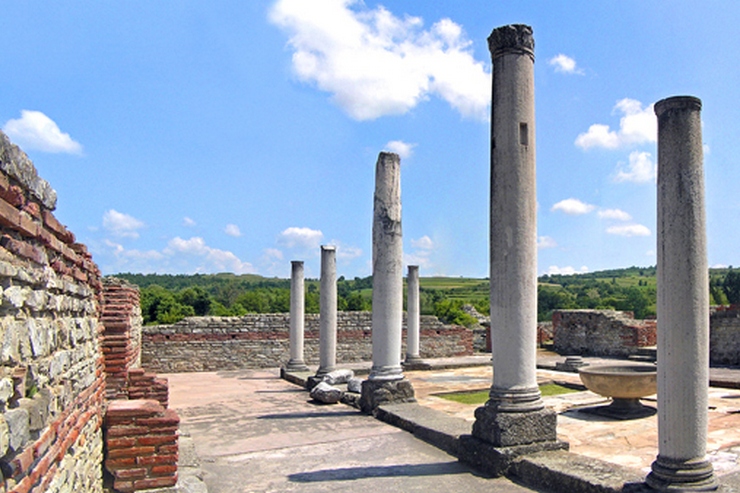
Gamzigrad is an archaeological site, spa resort and UNESCO World Heritage Site located south of the Danube river, near the city of Zajecar. It is the location of the ancient Roman complex of palaces and temples Felix Romuliana, built by Emperor Galerius in Dacia Ripensis. Felix Romuliana is a popular tourist stop on the Roman Emperors' trail which links the birthplaces of over 17 Roman Emperors born on the territory of modern Serbia.
Uvac Nature Reserve
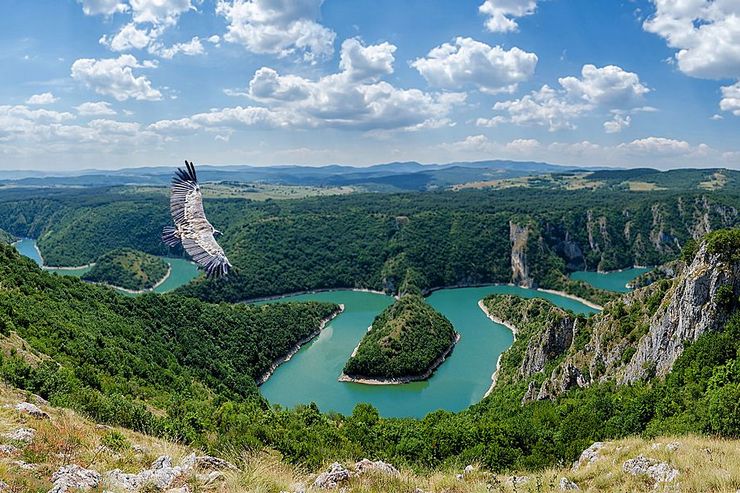
Uvac Nature Reserve is a special nature reserve of the category I in Serbia. It is known for the successful project of the preservation of the griffon vulture. The reserve is located in the southwestern Serbia, in the municipalities of Nova Varos (approximately 2/3) and Sjenica (1/3) in the Zlatibor District. The protected area is elongated and comprises the valley of the Uvac river, including the Uvac Gorge. In the Uvac river and its tributaries within the reserve, there are 24 species of fish. Clean water in rivers and reservoirs are natural spawning locations for huchen, brown trout (borth faria and lacustris morphs), brook trout, zander, Mediterranean barbel, common nase and European chub. Mammalian fauna includes wolves, bears, wild boars, foxes, hares, badgers and European pine martens, some of which are declared rare and endangered in Serbia.
Devil's Town
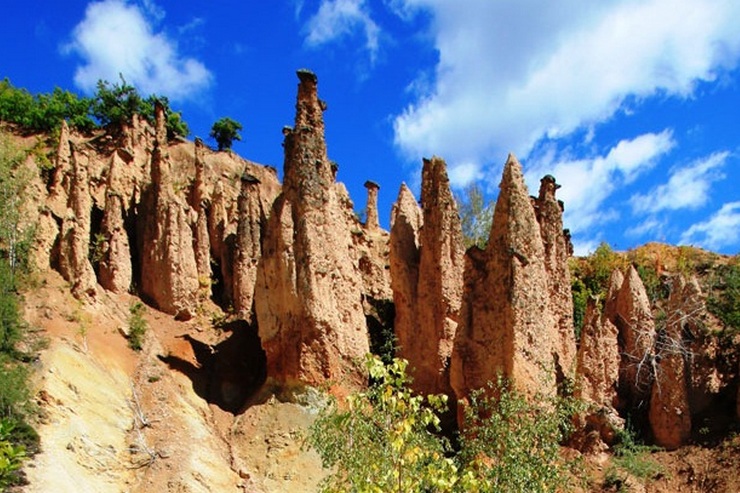
Djavolja Varos ("Devil's Town") is a peculiar rock formation, located in south Serbia on the Radan Mountain on the territory of the village of Djake in the municipality Kursumlija. The formations were scientifically examined and described in 1955 by Tomislav Rakicevic. Since 1959, Devil's Town has been protected by the state and a 1995 decision of the Serbian Government declared it a major natural monument subject to category one protection. It is visited by 50,000 tourists yearly. Devil's Town was a nominee in the New Seven Wonders of Nature campaign.
Resava Cave
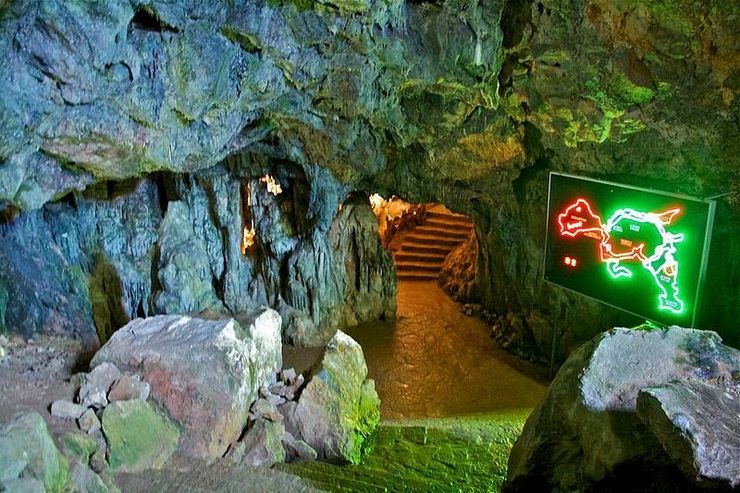
Resava Cave or Resavska Cave is a cave near Jelovac in eastern Serbia, about 20 kilometres from Despotovac. It is one of the largest cave systems in Serbia, with the corridors about 4.5 kilometres long. The cave is estimated to be 80 million years old while the oldest speleothems date from 45 million years ago. Altitude at the entrance into the cave is 485 metres and the lowest point inside is at 405 metres. On 1 May 2017, the Adrenalin Park, a new attraction was opened in the cave. It consist of 15 obstacles (hanging bridges, hanging cables, zip-line, beams, etc.).
Cities of Serbia
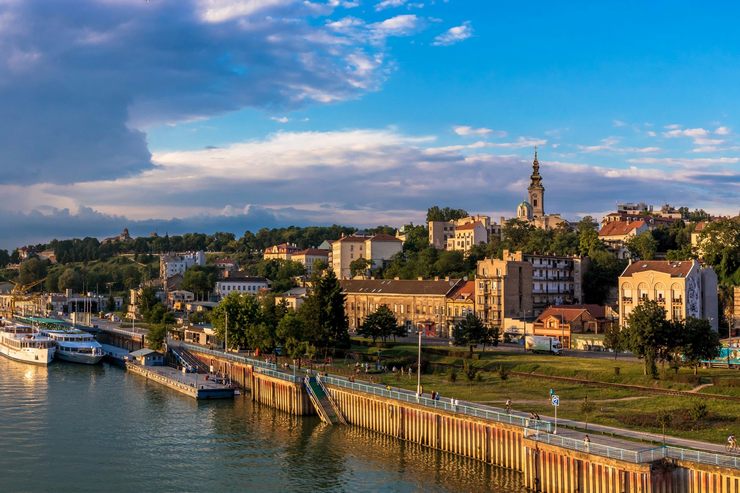
Every city and every place in Serbia has a story to tell, and whether you choose to visit the biggest ones - Belgrade, Novi Sad, Nis, Kragujevac, Kraljevo or some of the large number of ethnic villages such as: Drvengrad, Ljubis, Sirogojno, Latkovac, etc. you will surely have something to see. Serbia is one of the most interesting new destinations in the world that has so much to show and offer, and certainly once you've visit Serbia, you can't go home indifferent.


 RS
RS  ME
ME  HR
HR  BA
BA  RU
RU  MK
MK  AL
AL  ES
ES  DE
DE  IT
IT  CN
CN  NL
NL  SE
SE  FR
FR 

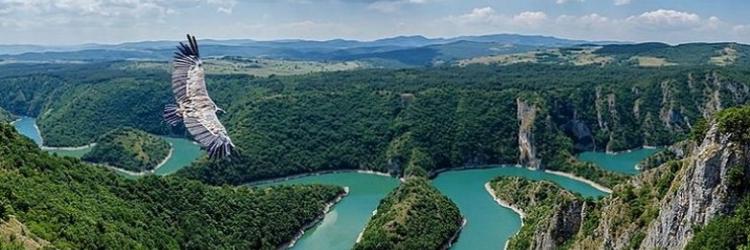
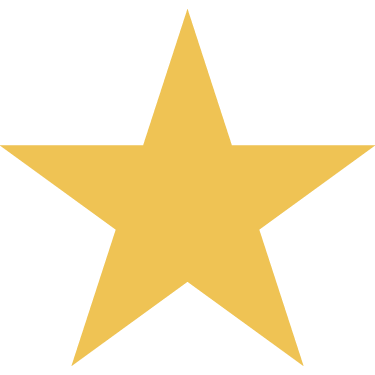



Write a comment